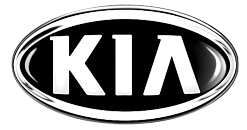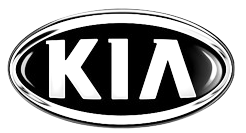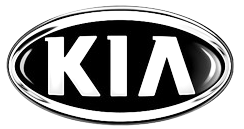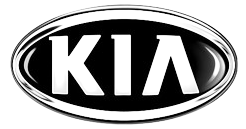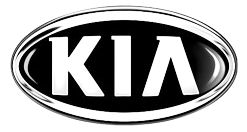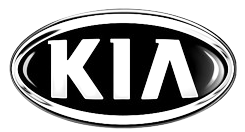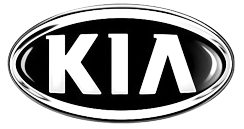Picking the right Kia wrecker can feel like a headache, especially if you don’t know what to look for. There are so many options out there, and it’s easy to get stuck with the wrong part or a service that doesn’t stand by their work. In this mechanic’s guide to choosing the best Kia wreckers, we’ll walk through the most important things to check out before you buy. Whether you’re fixing up your daily driver or working on a bigger project, knowing what makes a good wrecker stand out will save you time, money, and a whole lot of stress.
Key Takeaways
- Always check if the wrecker stocks the exact Kia model and year you need before making a trip.
- Read recent customer reviews to see if the business is trustworthy and stands behind their parts.
- Ask about warranties and return policies so you’re not stuck with a bad part.
- Get a clear, written quote to avoid surprise fees or unexpected costs.
- If you’re unsure, talk to a mechanic you trust before buying or installing used parts.
Understanding What Sets Quality Kia Wreckers Apart
Choosing a good Kia wrecker isn’t just about who has the most parts. What really counts is the kind of parts, the know-how behind the business, and how much people trust them. Picking a wrecker is a bit like picking your mechanic or favorite supermarket — tiny things end up mattering a lot.
The Value of OEM Versus Aftermarket Parts
Original Equipment Manufacturer (OEM) parts are built either by Kia or by companies Kia trusts to meet their specs. Aftermarket parts, on the other hand, come from outside manufacturers and might not match the original fit and quality perfectly. Here’s how the two stack up:
| Part Type | Fit Quality | Reliability | Price |
|---|---|---|---|
| OEM | Exact | High | Higher |
| Aftermarket | Varies | Varies | Usually Lower |
Some folks swear by OEM, especially for keeping their Kia running the way it should, while aftermarket can be a deal if you’re easygoing about brand names and fitment. Don’t be surprised if cheaper parts mean extra trips to the wrecker later.
Certifications and Industry Experience You Should Look For
Nobody wants a rookie guessing at what’ll fit your Sorento. Wreckers who’ve stuck around — and can show proof, like auto recycler certifications — tend to know their stuff. Years in the trade usually means they can tell at a glance which manual transmission actually fits your model and which ones are going to give you headaches. Ask about their experience; don’t just take their word for it, either.
Trust is often built on a combination of verified skill and a local reputation for not cutting corners, even if you’re just after a tail light.
The Importance of Customer Reviews and Reputation
Nothing tells the true story like the people who’ve already been there. A shop with solid reviews — not just glowing, but detailed write-ups about what went right (or wrong) — lets you know whether they leave customers stranded or satisfied. If you keep seeing stories about missing bolts or late shipments, that’s a sign. On the other hand, lots of good feedback about fair prices and working parts? That’s gold.
Bottom line: finding that right balance between quality parts, real know-how, and a track record of happy customers makes all the difference in your wrecker experience.
Key Questions to Ask Before Choosing a Kia Wrecker

Finding the right Kia wrecker isn’t just about saving a few dollars—it’s about making sure you get parts that actually work, fit right, and last more than a week. Asking the right questions up front can make all the difference between a smooth repair and a project you deeply regret. Here’s what you should focus on:
Availability of Specific Kia Models and Years
Not every wrecker will have the part for your exact model and year—especially if you drive something uncommon. When you call, don’t just ask if they have “a part for a Kia.” Give them your model, year, and trim. It saves everyone time. Some wreckers can source parts even if they don’t have them on the lot, but you might be waiting longer or paying more than you expected.
| Question | Why It Matters |
|---|---|
| Do you have my Kia’s exact year? | Ensures part compatibility |
| Is the part from a damaged car? | Condition might be a factor |
If you jump at the first offer, you could end up with a part that almost fits—or doesn’t work at all. Double-checking details keeps headaches to a minimum.
Return Policies and Part Warranties
A good wrecker stands by what they sell. Some offer no returns at all (especially for electrical parts), while others might give you only a couple of days. Always ask about both the return policy and the warranty before you hand over your money. Written terms beat a hasty phone promise every time.
| Policy Type | Typical Duration |
|---|---|
| Return policy | 3-30 days |
| Used part warranty | 0-90 days |
Inspection and Testing Procedures for Used Parts
You want to know that someone, preferably someone who understands Kias, actually checked the part before selling it. Ask them what testing they’ve done—was it just a visual look-over, or did they bench-test components like alternators and starters? For bigger parts (think engines and transmissions), you need more proof that the part works.
Don’t be shy about getting details. Sometimes, all you need is one straightforward question about testing to reveal whether this is a good wrecker or just a junkyard out for a quick sale.
How Pricing and Transparency Affect Your Wrecker Experience

You can’t really know what you’re getting until you ask the tough questions about prices and how a Kia wrecker handles quotes and costs. In reality, some wreckers are straight-up with you, while others seem to come up with new fees the second you think you’ve sorted the bill. If you don’t want a nasty surprise, pay close attention to how clear they are from the first phone call to pickup.
Comparing Upfront Quotes and Hidden Fees
When you call around for a Kia part, the best wreckers are totally upfront with their quoted price. But sometimes, that number doesn’t tell the whole story. Maybe the quote is just for the part and not for pulling it out, or maybe there’s a “processing” charge you won’t hear about until checkout. Here’s a simple table to help you spot what to ask:
| Fee Type | Typical Range | Should Be Disclosed? |
|---|---|---|
| Part Cost | $50 – $300 | Yes |
| Removal Fee | $20 – $100 | Yes |
| Processing/Admin | $10 – $50 | Yes |
| Delivery/Shipping | $25 – $100 | Yes |
It’s worth asking for a line-by-line quote, because just hearing “It’s about a hundred bucks, mate" doesn’t mean much once you get there and they start listing add-ons.
Requesting Written Estimates for Major Purchases
Anytime you’re dropping serious cash—maybe on a full engine, transmission, or complex electronics—a written estimate will save you headaches. Don’t just trust a quick phone quote for anything besides basic stuff. Get them to write it down, email it, or at least text you a full breakdown. This helps you compare with other wreckers and hold them to it if you show up and the cost has magically doubled.
Fair Labor and Installation Costs
Getting a part pulled is one thing, but what about installation? Some wreckers will throw in basic labor if you buy from them, but most will charge. Know what’s included and what isn’t. A fair shop makes the labor rate clear, tells you how long your job will probably take, and only does the work you agreed on.
| Service | Low Estimate | High Estimate |
|---|---|---|
| Part Pulling Only | $20 | $100 |
| Installation (basic) | $30 | $200 |
| Installation (complex) | $100 | $500+ |
Always double check who’s actually installing the part—sometimes the hourly rate is higher if you want a mechanic and not just a wrecker’s tech. Also, ask if there’s a warranty on labor, not just the part.
Assessing Environmental Responsibility in Kia Wrecking Services
Making sure your Kia wrecker cares about the environment should matter just as much as getting the right part. These businesses handle a lot of potentially harmful materials, so how they dispose of old parts and deal with chemicals says a lot about their priorities and how safe their operation is for the long run.
Recycling Standards and Hazardous Material Handling
Responsible Kia wreckers recycle as many materials as possible, from metals and plastics to fluids like coolant and oil. If a wrecker tosses parts into landfill or doesn’t separate out hazardous liquids, you run the risk of supporting a business that’s not meeting basic industry safety. The difference is clear: some yards strip and sort each car, properly draining and processing batteries, oils, and refrigerants, while others don’t bother. For anyone who doesn’t want to add to pollution, it’s fair to ask your wrecker exactly how they process scrap and if they have systems for recycling and safe storage.
| Material | Should Be Handled/Disposed By | Environmental Risk if Ignored |
|---|---|---|
| Engine Oil | Licensed fluid recycler | Soil, water contamination |
| Coolant | Hazardous waste processing company | Harm to pets, wildlife |
| Batteries | Battery recycler | Acid leaks, toxic metals |
| Tires | Tire recycler | Fires, mosquito breeding |
A good wrecker doesn’t just cut up cars—they protect the ground beneath them and keep toxins out of the community.
Eco-Friendly Disposal of Unusable Parts
Sometimes, parts just can’t be used again. So what then? The best Kia wreckers find certified ways to dispose of things like shredded seat foam or shattered windshields. They work with partners who specialize in landfill diversion or safe material break-down. Instead of chucking everything in a dumpster, ask if your wrecker tracks what goes into landfill and what gets processed for reuse. Accountability here can really set one yard apart from another.
Supporting Green Business Practices
Supporting a wrecker that pays attention to environmental laws is more than a feel-good decision—sometimes, it’s just common sense. Look for places that have up-to-date paperwork, insurance, and memberships in auto recycling groups. Shops with green policies often post them on their website, and workers aren’t shy about discussing their efforts. If a wrecker is open about their processes and welcomes questions, you’re probably in good hands.
In the end, when you choose a wrecker that puts the planet first, you’re not just fixing your ride—you’re helping your local community stay cleaner and safer.
Utilizing Professional Advice for the Best Results
Sometimes, it feels like every repair brings new questions. Should you actually trust that shiny used part from a wrecker? Talking to a mechanic you already know is a huge help. A trusted mechanic can spot potential problems with used or salvaged parts that even a very detailed online listing might miss. And if you’re not sure if that alternator is compatible with your Kia’s engine year, a mechanic will usually know right away, saving a lot of headache. They’re also good at explaining why it’s better to buy a slightly pricier OEM part over a risky aftermarket one.
An honest chat with your mechanic before buying from a wrecker often saves time and money by stopping bad decisions before they start.
Evaluating Installation Services versus DIY Options
The temptation to save a few bucks and just do it yourself is real, especially when YouTube makes every job look easy. Still, there are plenty of wreckers who offer installation for an extra fee. Is it worth paying for? Here’s a basic rundown of what to expect:
| Installation Option | Typical Cost Range | Estimated Time | Warranty Offered? |
|---|---|---|---|
| DIY | Only Parts Cost | Several Hours | Sometimes None |
| Wrecker Install | $50 – $250 | 1-3 Hours | Usually Yes |
| Mechanic Shop | $80 – $400 | 1-2 Hours | Yes |
If your skill level is beginner and the job involves electronics or safety-critical parts, it’s often better to let the pros handle it. On the other hand, if you’re comfortable with tools and it’s just a bolt-on exterior piece, DIY can make sense, as long as you double-check everything.
Recognizing the Red Flags of Unreliable Wreckers
Sometimes, a wrecker’s deal just seems too good to be true—because it is. When a seller avoids giving clear answers about part condition, skips offering a warranty, or hesitates to show proof of testing, you should probably walk away.
If all you get are vague assurances but no written promise or paperwork, treat it as a warning sign. A reputable wrecker has nothing to hide: they’re upfront about part origins, wear and tear, and what kind of support you’ll get after the sale.
The easiest way to spot trouble is by trusting your gut and refusing to rush; a good deal today is still good tomorrow if it’s real.
Maximizing Value with Wreckers for Kia Repairs and Upgrades
Finding Hard-to-Get Replacement Parts
If you’ve tried to get a specific Kia tail light or a control module from the dealer lately, you probably already know the pain. Some older or less common Kia models make it tough to track down parts. A good wrecker can become your secret weapon for these tricky finds. They often stock components long after dealers have moved on. Sometimes, you just have to call around or send a few emails, but in the end, you’re more likely to land exactly what you need—without waiting three months for overseas shipping.
It’s frustrating to have your car sidelined just because of an out-of-stock sensor. The right wrecker can help you keep your car on the road for years just by having access to these forgotten parts.
Sourcing Performance or Custom Components
Car owners with a taste for custom upgrades know that new aftermarket parts cost a lot. But Kia wreckers are a sort of playground for those wanting OEM performance gear, unique trim pieces, or rare wheels. You’re not stuck with standard parts—sometimes, you’ll stumble on sporty seats or a turbo system that would cost a fortune new but is affordable used.
| Component Type | Dealer Price (USD) | Wrecker Price (USD) |
|---|---|---|
| OEM Turbocharger | $1,100 | $450 |
| Leather Sport Seats | $900 | $300 |
| Alloy Wheels (each) | $400 | $150 |
Saving Money on High-Cost Repairs
Big repairs, like a blown transmission or a busted engine, can stretch anyone’s budget. Getting a quality used part from a reputable Kia wrecker can literally cut your bill in half. Mechanics know this—many recommend checking with wreckers first, especially for expensive fixes that don’t make sense with new parts costs alone. And if you’re handy, you might even do the swap yourself and avoid hefty labor charges.
For many people, buying recycled parts isn’t just about the savings—it’s the only realistic chance to keep their Kia running without going bankrupt. Wreckers make high-dollar repairs actually possible instead of just a dream.
Conclusion
So, picking the right Kia wrecker isn’t just about grabbing the first number you find online. It’s about being smart with your money and your car. Take your time to check reviews, ask questions, and compare prices. Don’t be afraid to walk away if something feels off—there are plenty of options out there. Remember, a good wrecker will help you save cash and keep your Kia running longer, not just sell you the first part they find. Trust your gut, do a little homework, and you’ll end up with the right parts and a lot less stress. At the end of the day, it’s your car and your wallet—make the choice that feels right for you.


